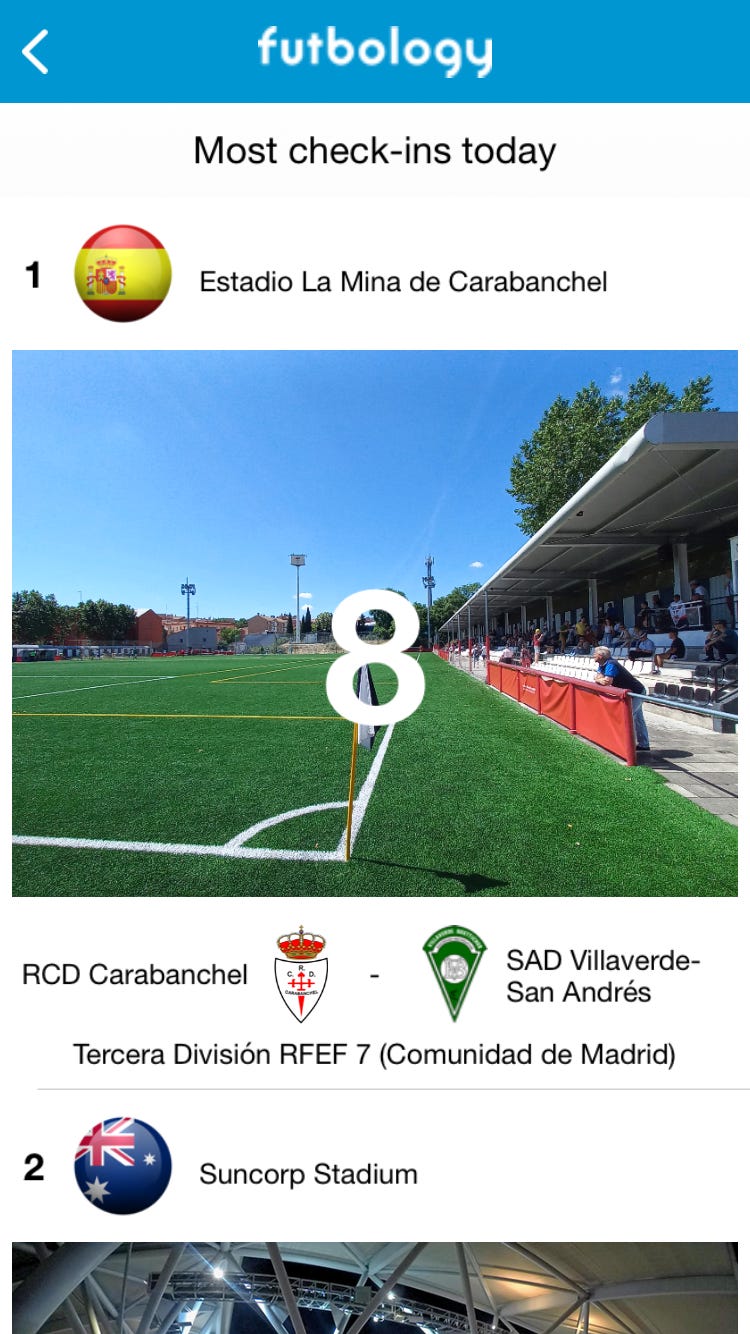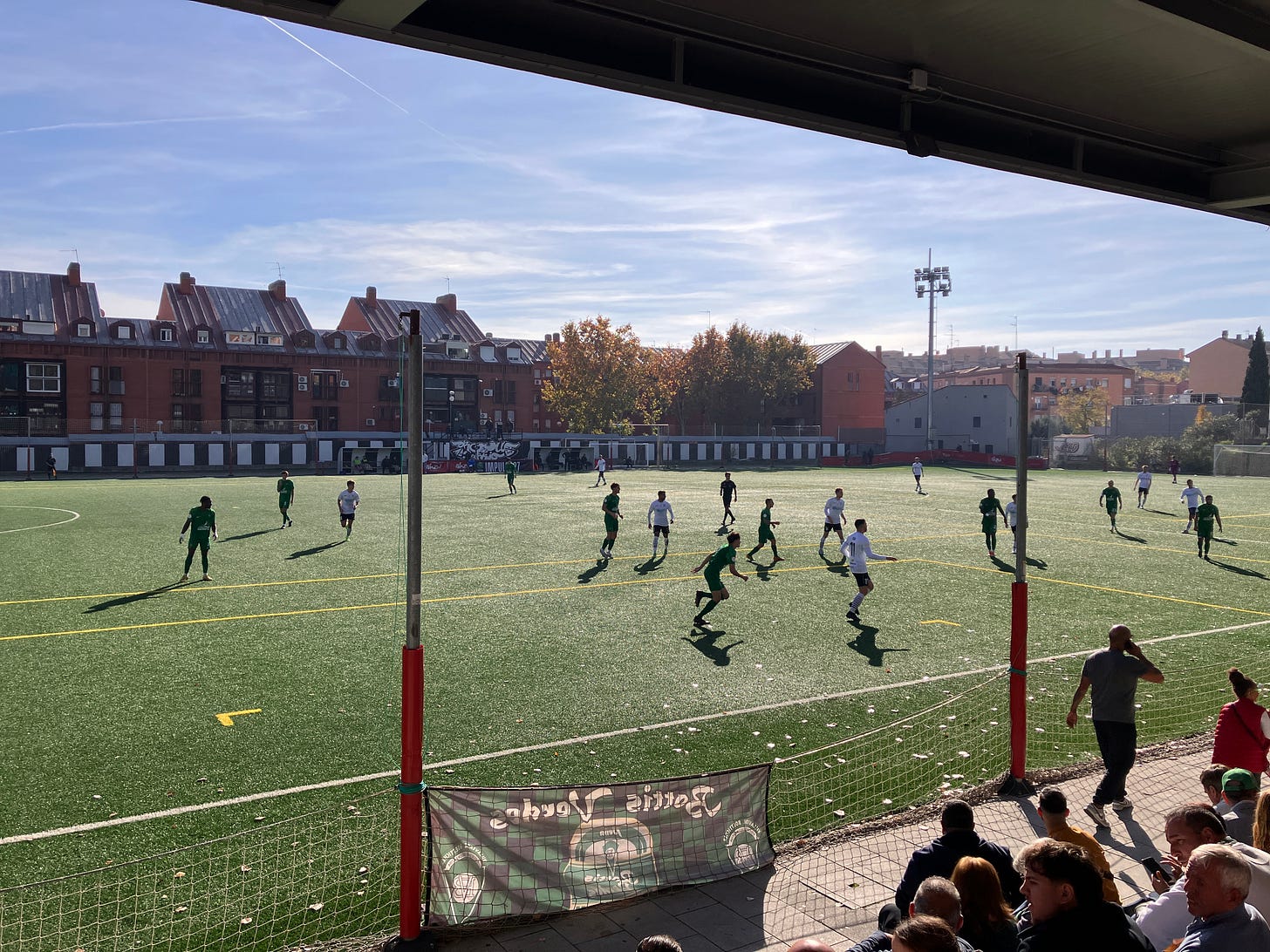The oldest ground in Madrid and the biggest game in the world
For a while last Friday morning, La Mina in Carabanchel was the centre of the footballing world - at least according to users of the Futbology App!
For a few hours on Friday 6th December, La Mina de Carabanchel was hosting the biggest game in the world, at least according to the number of users who had checked in on the Futbology App.
The start of a holiday weekend for Día de la Constitución meant a number of teams in Spain brought their fixtures forward from their usual Sunday slots and the unorthodox kick-off time allowed the Tercera Federación Group 7 clash between hosts RCD Carabanchel and Villaverde-San Andrés to top the ranking through the morning and afternoon before the usual suspects in Germany took over, pushing it out of the top ten. Still, it was nice while it lasted.
That’s the biggest game in the world part dealt with, so what about the oldest ground in Madrid? Don’t let its modern stand and artificial pitch fool you, La Mina has been hosting football in Madrid since 1916, long before construction on the Bernabéu and the old Calderón had even begun.
At first, this new-fang led “football” thing was slow to catch on in the capital considering Spain’s first club, Recreativo de Huelva, was set up in 1889. It was 1902 before Madrid CF (later to become Real Madrid) was founded and a year later, a group of Basque students set up Athletic Club de Madrid, initially a cadet branch of the already-established club in Bilbao, but which would go on to become Atlético.
The third oldest club in the city however, has had a very different existence from those two giants. Founded in 1916, Club Deportivo Carabanchel are a true barrio club who have spent most of the intervening years in the Tercera Division with a brief foray into the old Segunda B between 1996 and 1998. In the middle of that period, the then-King, Juan Carlos I, granted them the title ‘Real’ in recognition of their contribution to football in Madrid.
The 2000's were a particularly difficult decade for the club, starting with relegation from the Tercera in 2000 and they spent most of the decade in the Preferente, two promotions saw them come straight back down again the following season, before in 2008 they slipped into the sixth tier, the Primera Aficionado, for the first time in their history.
There they languished for two seasons until an unlikely hero led them to promotion. That man was Germán 'Mono' Burgos, the famously intimidating Argentina goalkeeper most famous these days as Diego Simeone's one-time right hand man. But before he joined up with El Cholo at Catania in 2011, he got his 'big' break in coaching by leading Carabanchel back into the Preferente before being sacked early on the following season. Despite his departure, they eventually went on to win promotion that season, staying in the Tercera again for three seasons before another relegation, but they returned in 2018 after winning their section of the Preferente. They were relegated again in 2022 but roared back last season, clinching the title with a game to spare.
Their ground, La Mina, was inaugurated in 1916 meaning that it is the oldest ground still in use today in the city of Madrid - even though the modern day ground has undergone numerous renovations and improvements in the intervening years.
The most sweeping of those came in 2009/10 when the old dirt pitch made way for a brand new artificial grass one. The ground was officially inaugurated in January 2010 with a friendly between a Carabanchel Legends XI and a La Liga Legends XI, which included such luminaries as Alfonso Pérez, Kiko and Pedrag Mijatovic.
I’m sure that in its 108 years of history La Mina has hosted many a thrilling contest. This particular game was not one of them. It had the feeling of a 0-0 long before the final whistle with two fairly evenly-matched teams cancelling each other out.
It may have lacked excitement on the pitch but is there really any better way to spent part of one of Spain’s many public holidays than among friends, watching some Fútbol Modesto and then prolonging matters with a tercer tiempo at a nearby bar? In many ways, that’s what the lower league experience is all about.






Gonna get on the futbology app now.
I love the history bit in this piece. Looking forward to reading more.